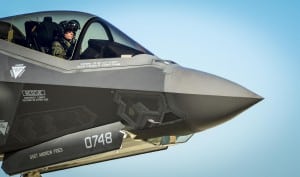
The F-35 program will triple its aircraft production and fielding rate by 2019, which is giving Program Executive Officer (PEO) Air Force Lt. Gen. Christopher Bogdan pause, he said Wednesday.Bogdan said the program will deliver about 43 airplanes next year as part of Lot 8. Over the next three years, in Lots 9, 10 and 11, the F-35 program will produce over 120 planes per year, he said. An acquisition rule of thumb, Bogdan said, is not to do more…













